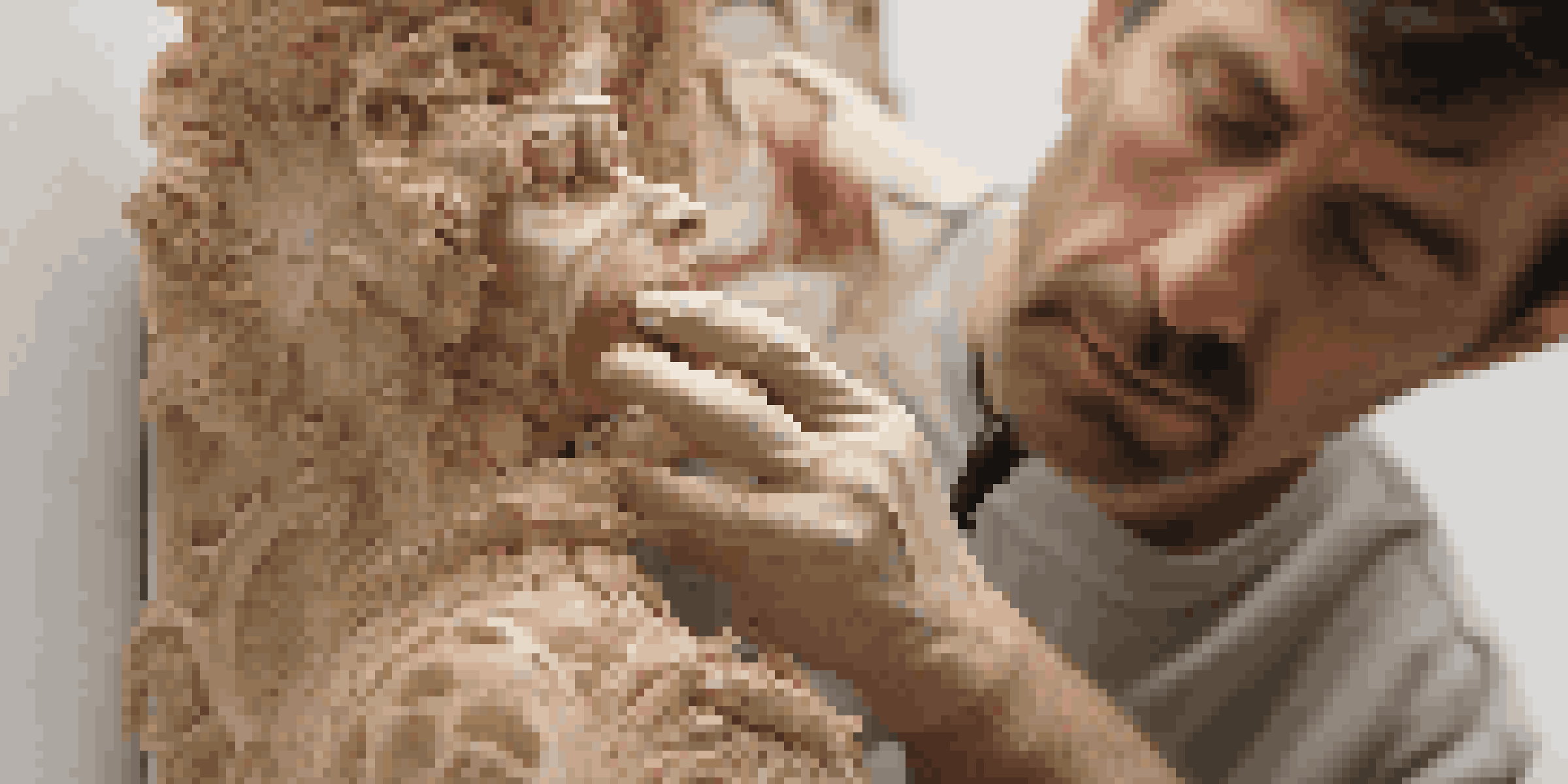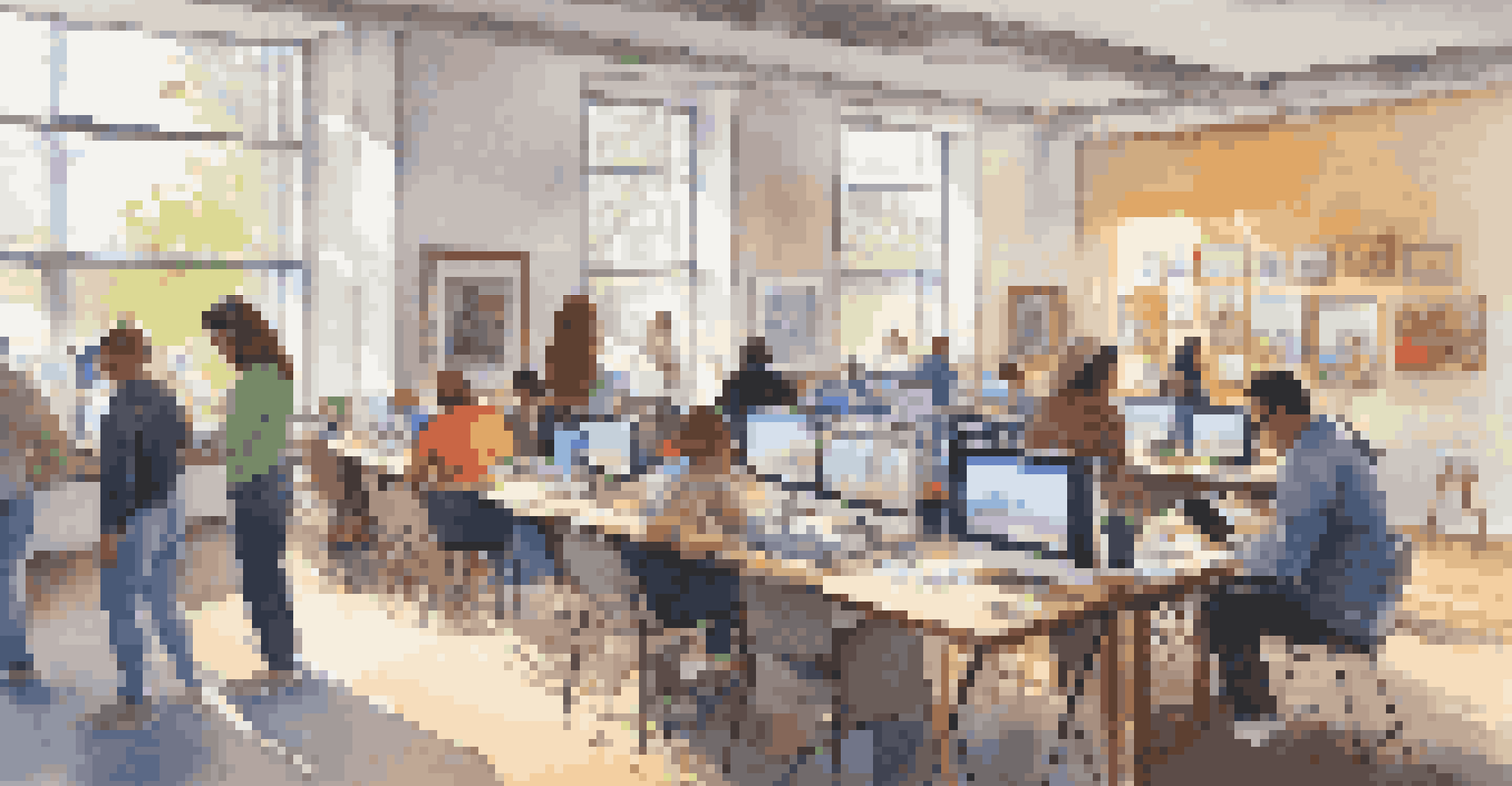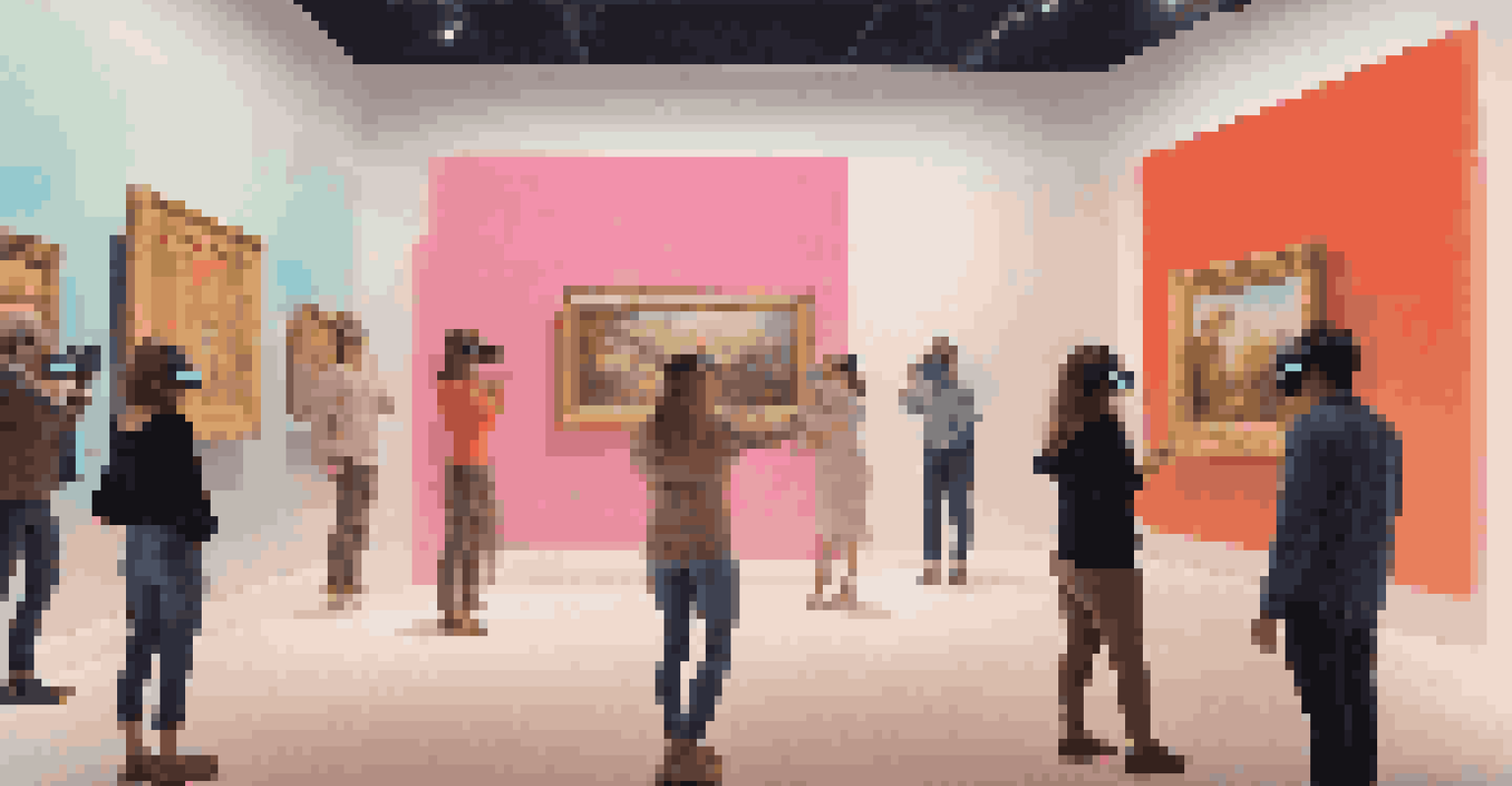The Intersection of Art and Technology in Preservation

Understanding Art and Technology in Preservation
Art and technology may seem like two distinct realms, but they intersect beautifully in the field of preservation. Art represents our cultural heritage, while technology offers innovative solutions to protect it. By merging these domains, we create new opportunities to maintain the integrity of historical works for future generations.
The arts are the most powerful means of communication we have, and technology can amplify that voice.
This intersection is not just about maintaining the aesthetic qualities of art but also about utilizing modern tools to document and restore them. For instance, 3D scanning technology enables us to capture the intricate details of sculptures and other artifacts. This digital representation acts as a safeguard, preserving the essence of the artwork even if the physical piece suffers damage.
Furthermore, the use of technology in art preservation makes it more accessible. Virtual reality experiences allow individuals to explore historical sites and artworks remotely, broadening public engagement. This fusion of art and technology ensures that our cultural narratives are not only preserved but also shared widely.
The Role of Digital Archiving in Art Preservation
Digital archiving plays a vital role in safeguarding our artistic heritage. This process involves creating digital copies of artworks, ensuring they remain intact even in the face of physical deterioration. Think of it as having a backup for your favorite music playlist; if something happens to the original, you still have a way to enjoy it.

Many museums and galleries are now investing in high-resolution imaging and scanning techniques to create detailed digital representations of their collections. These archives not only serve as a protective measure but also as a valuable resource for researchers and art enthusiasts alike. Moreover, they can be used to track changes in artworks over time, providing insights into the aging process of materials.
Technology Enhances Art Preservation
The integration of technology in art preservation not only safeguards historical works but also improves accessibility and public engagement.
Additionally, digital archives can expand access to art education. Students and scholars can study pieces that may be geographically or physically out of reach. By making these artworks available online, we ensure that the legacy of our artistic heritage continues to inspire future generations.
Innovative Techniques in Restoration and Conservation
Restoration and conservation techniques have evolved dramatically with technological advancements. Traditional methods often relied on manual labor and materials, but technology now offers precise tools that can minimize the risk of damage. For example, laser cleaning techniques allow conservators to remove contaminants from artworks without harsh chemicals.
Art is not freedom from discipline, but disciplined freedom.
Additionally, augmented reality (AR) is making waves in the restoration community. AR applications enable conservators to visualize the original state of a piece before starting restoration work. Imagine being able to see an artwork in its pristine form, layered over the current state, guiding the restorer in making informed decisions.
These innovative methods do not just preserve art; they also enhance the experience for viewers. By using technology to restore and display artworks, audiences can appreciate the artist's original vision, deepening their connection to the piece. This blend of preservation and technology creates a richer narrative around cultural heritage.
The Impact of Artificial Intelligence on Art Preservation
Artificial intelligence (AI) is revolutionizing the way we approach art preservation. With machine learning algorithms, we can analyze and predict the degradation of materials used in artworks. This predictive analysis allows conservators to take proactive measures, extending the life of pieces that may be at risk.
AI can also assist in cataloging collections. By automating the process of identifying and categorizing artworks, institutions can save time and resources. For instance, AI-powered image recognition can quickly categorize thousands of paintings, making it easier for curators to manage their collections efficiently.
AI Revolutionizes Art Restoration
Artificial intelligence is transforming art preservation through predictive analysis and efficient cataloging, enriching our understanding of art history.
Moreover, AI-generated insights can enhance our understanding of art history. By analyzing patterns in artistic techniques and styles, AI can reveal connections between artists and movements that may not be immediately apparent. This not only enriches the field of art history but also fosters a deeper appreciation for the evolution of artistic expression.
Cultural Heritage and Global Collaboration
The preservation of cultural heritage is a global effort, and technology plays a crucial role in facilitating collaboration across borders. Institutions from different countries can share knowledge, resources, and techniques, creating a network of support for preserving art. This collaborative spirit helps ensure that cultural treasures are protected, regardless of their geographical location.
For example, initiatives like the International Council of Museums (ICOM) promote the exchange of best practices in preservation. Through conferences and workshops, experts from around the world come together to discuss challenges and solutions. This enables the pooling of resources, making it easier for smaller institutions to access cutting-edge technology.
In today's interconnected world, the digitalization of art and cultural heritage allows for even broader collaboration. Virtual platforms enable global audiences to participate in preservation efforts, from crowdfunding restoration projects to sharing expertise. This collective effort exemplifies how technology can unite us in the mission to safeguard our shared heritage.
Public Engagement and Community Involvement
Engaging the public in art preservation efforts is essential for fostering a sense of community ownership. Technology can facilitate this engagement in innovative ways. For instance, social media campaigns allow institutions to share their preservation stories, inviting people to participate in discussions about the importance of safeguarding cultural heritage.
Workshops and educational programs that incorporate technology can empower community members to take an active role in preservation. By teaching skills such as digital documentation or basic restoration techniques, individuals can contribute to their local heritage projects. This not only helps preserve art but also strengthens community bonds.
Global Collaboration is Essential
Preserving cultural heritage requires global collaboration, where institutions share resources and knowledge to protect art across borders.
Moreover, crowdsourcing initiatives can involve the public in identifying and cataloging artworks. This collaborative effort not only aids in preservation but also democratizes access to art knowledge. When communities come together to protect their cultural heritage, they create a lasting legacy that reflects their unique history and identity.
The Future of Art Preservation: A Harmonious Blend
As we look to the future, the harmonious blend of art and technology in preservation holds immense potential. With continuous advancements in tools and techniques, we can expect even more innovative solutions to emerge. This evolution will not only enhance the preservation process but also enrich the experience of engaging with art.
The future may see the rise of fully immersive experiences that combine virtual reality with physical art. Imagine walking through a gallery where you can interact with digital representations of artworks while learning about their history and significance. This kind of engagement can transform the way we appreciate and understand art.

Ultimately, the intersection of art and technology in preservation is about more than just safeguarding objects; it's about telling stories and connecting people. As we embrace these advancements, we can ensure that our artistic heritage remains vibrant and accessible for generations to come.